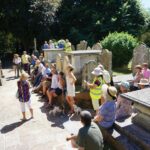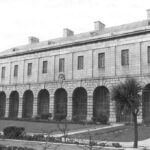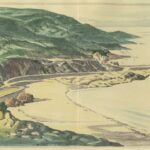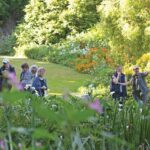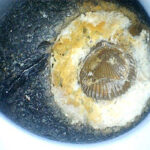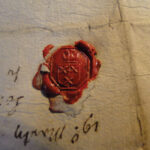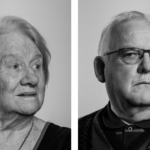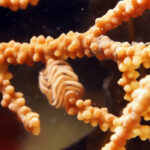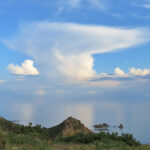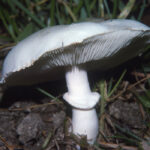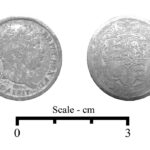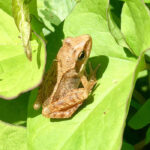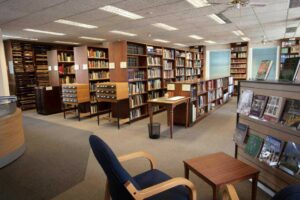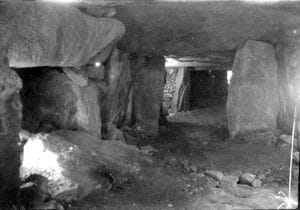In conversation with Field Archaeologist Dr. Hervé Duval-Gatignol
Whenever I visit the Société Jersiaise, nestled behind a granite archway on Pier Road, I get the same feeling I get when walking into places like the British Library or the V&A. Although altogether more understated than those institutions, the immense knowledge and expertise housed within the Société’s walls is just as vast and spectacular.
As I write this blog series and discover more about the organisation, my fascination and curiosity for the Société deepens with every conversation. And this interview with the Société’s Field Archaeologist Dr. Hervé Duval-Gatignol was no exception.
Hervé, who hails from Brittany, was appointed to the role in late 2022 after successfully defending his PhD about a site in the enclosure of the Atlantic and Channel coastline dating back to the first millennium BC. Having previously worked mostly in the Brittany region, Hervé said he was always aware of the unique and vastly “interesting potential” of Jersey and the Channel Islands’ archaeological offering.
So, when his PhD supervisor told him about the job at the Société, Hervé said he “didn’t really think twice” about applying. He described the role as being the “perfect opportunity to continue the research and to start new projects.”
He explained that as the Société builds their international reputation and fosters connections with other heritage organisations, like the recent partnership with La Fabrique in Normandy, his knowledge and network in France made him an attractive candidate for the role.
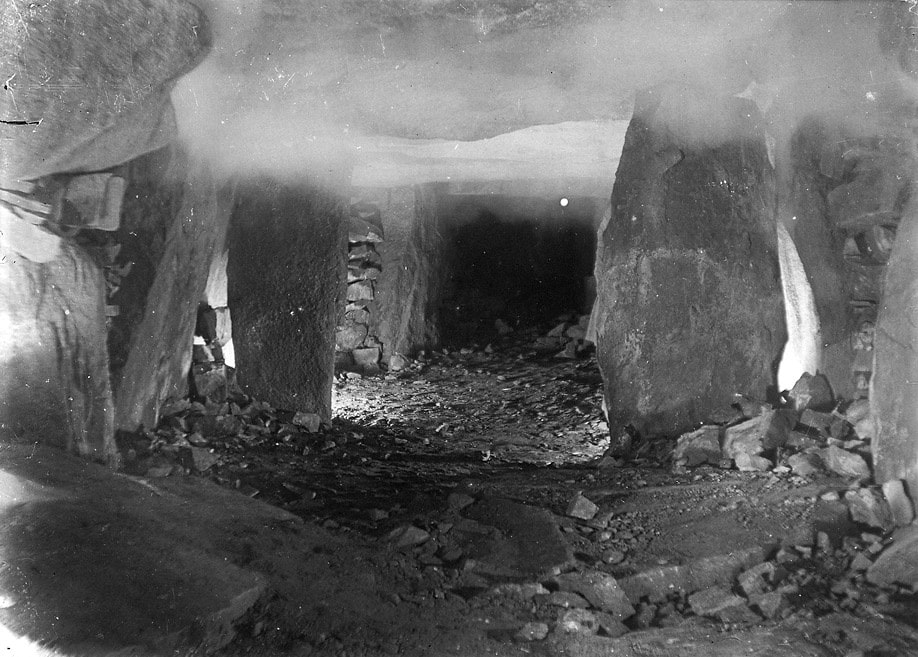
Whilst archaeology may seem like one of those far-flung careers that belong only in Indiana Jones films or Agatha Christie novels, one of the key responsibilities of the Field Archaeologist at the Société is to engage the local community in the subject and even to put Islanders on the path to pursuing it professionally.
Hervé tells me about a number of initiatives that the Section, overseen by the Archaeology Section Chair Marc Yates, is running in the community to engage people with Jersey’s unique and rich archaeological heritage.
Commenting on one such project, ‘Neolithic Neighbours’, Hervé explained: “The goal is to meet people living close to the megaliths, the monuments, […] to see if they found in the past objects [or] artefacts in their garden or in the landscape surrounding the monuments and to record these finds. And also, to provide a bit of information about the sites, what they used to be and why this is so important to know more about [them].”
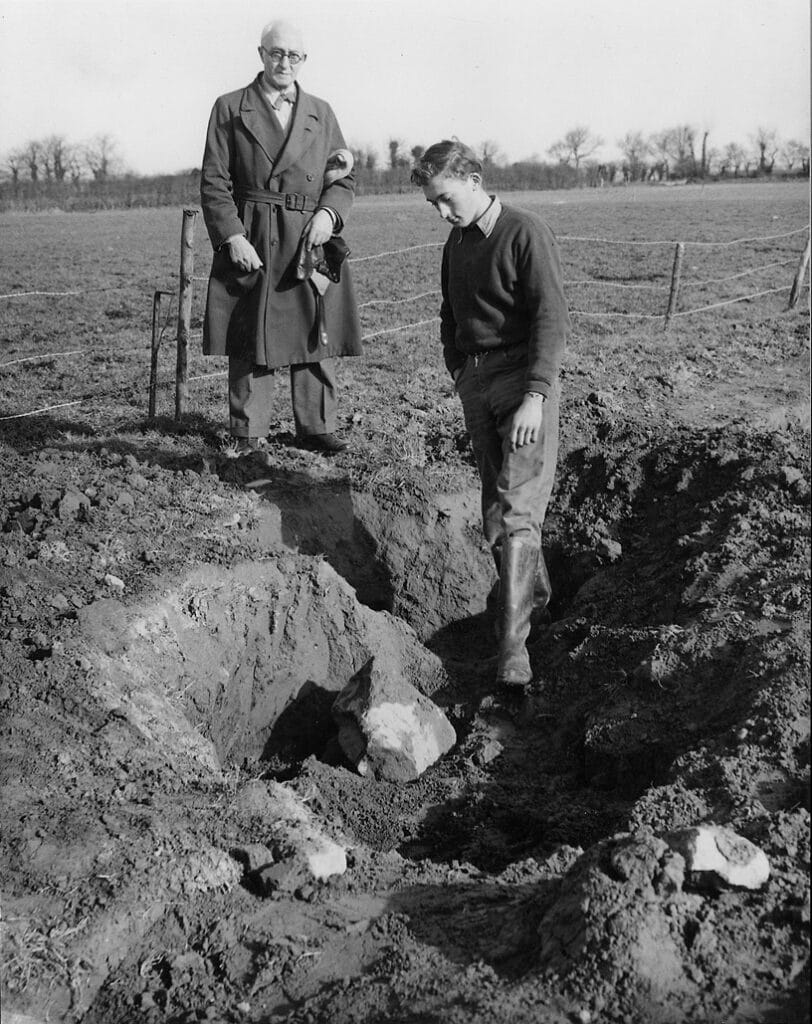
This interview took place just as Hervé and the Société were gearing up for the organisation’s annual participation in the Council for British Archaeology (CBA) Festival of Archaeology. As part of the festival, the Société are hosting a number of free events including guided walks, film screenings and workshops all about local archaeological finds and discoveries. Click here to find out more and book your tickets.
The Archaeology Section members meet weekly at La Hougue Bie and, in addition to attending talks by visiting experts, taking part in local events like the Société’s recent Victorian Day, Hervé said that he also hopes to invite some members to sites in the future so they can learn how to excavate.
Hervé said that the community engagement element of the role distinguishes the Société from other academic settings: “It is the issue with academic work that we tend to stay on our own or in the lab or in conference, but we don’t talk too much with the community or with volunteers.
“In this way, I’m also very happy because I met during the last year many different people, all with their different interests for the field of research. And that has been very, very exciting.”
He added that through their membership with the Archaeology Section and the Société’s partnership with JICAS, a couple of Islanders have gone on to pursue their Archaeology research projects at degree level.
Although Hervé has not been in the role very long, he has big plans in terms of the field work run by the Société’s in-house Archaeology Department, the research element of his role.
One of the projects he has spearheaded is a collaboration with Jersey Heritage, the Guernsey Museum and the Institut National de Recherches Archéologiques Préventives (INRAP) to create a “synthesis of all the knowledge of the late Iron Age in the Channel Islands and Western Normandy.”
Other projects on the agenda include how to protect and monitor archaeological sites under threat from coastal erosion and another project seeks to conduct non-intrusive research into Le Câtillon, the site where Jersey’s Celtic coin hoard was found.
Hervé is also keen to put Jersey on the map a bit more within the academic world of archaeology. He said: “As much as possible, I try to go to conferences in France or in the UK or elsewhere to talk about archaeology based in the Channel Islands and the research we are doing in Jersey and to publish those results. So, we have more visibility for the academic world.”
The Field Archaeologist hopes that by doing this, he will attract more PhD and Masters students to the island to assist him on excavations, which will allow for him to take on bigger projects in the future. And indeed, Jersey will become the site of one such Archaeological conference from 8th – 10th September this year, when experts will visit the Island to present findings on a range of Archaeological eras from the Paleolithic Age right through to the First and Second World Wars.
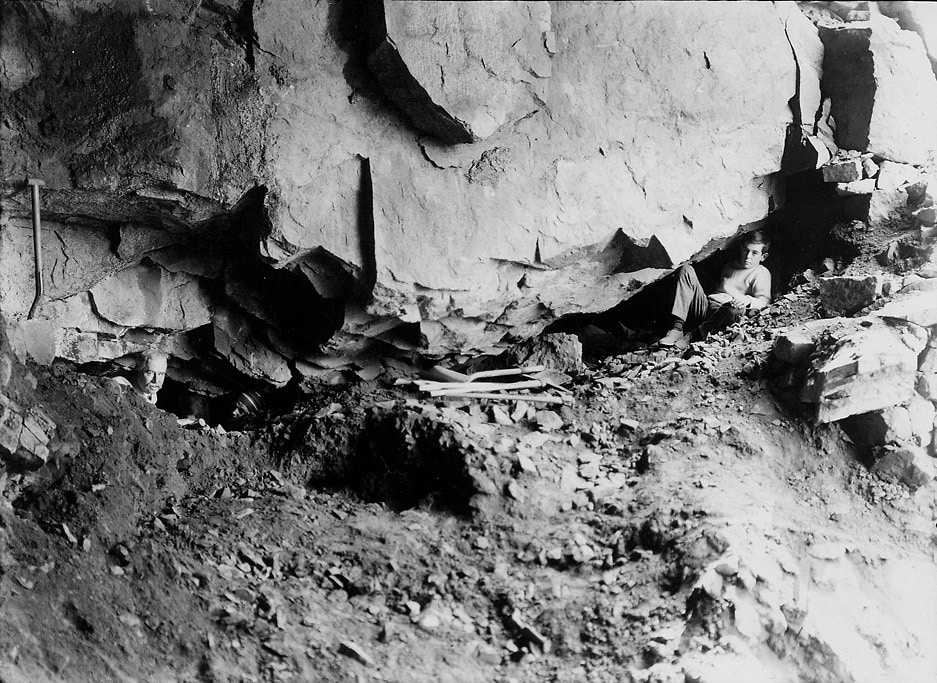
The theme of the Société’s 150th anniversary this year is ‘Past, Present, Future’, and whilst speaking to Hervé, it was clear he was keenly connected with this concept.
“When I’m doing a project, I’m always looking for what will come next, so I’m already looking to the future,” he said. However, he emphasised that in order to sustain and explore the field of research in years to come, “we need to attract the younger generation.”
Speaking about what is next for local archaeology, Hervé said: “When we have looked at the maps of the archaeological sites, we see that most of the things that have been identified so far are close to the coastline, because it is easier to detect sites either due to the erosion or due to the commercial archaeology that has been done next to the main harbours in St. Helier.
“But if you look in-land in the countryside, there are probably hundreds of sites buried in the ground that we need to look at properly. But for now, we don’t know anything because no research has been focused on that. There is something I want to reverse, and I’ll be starting at the end of this year to announce the new sites being found!”
To find out more about the Archaeology Section, click here.
